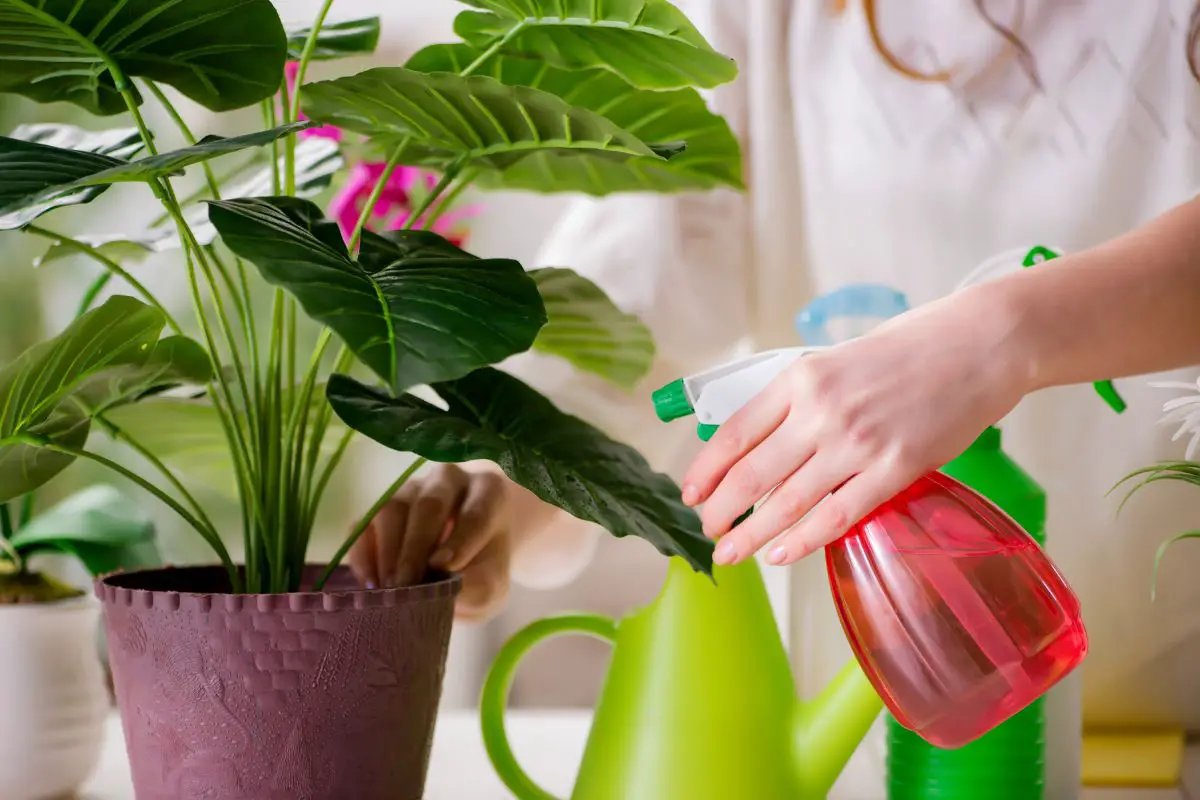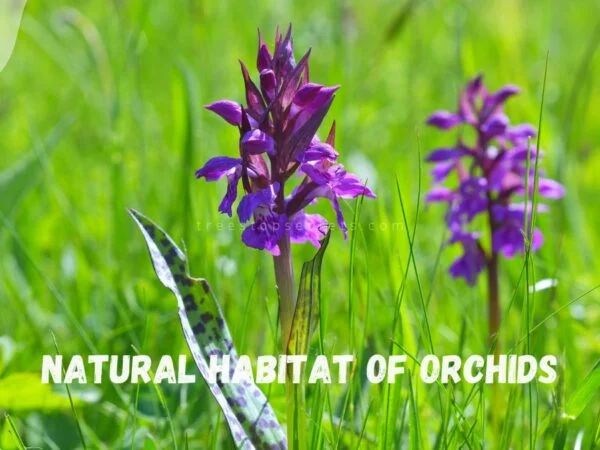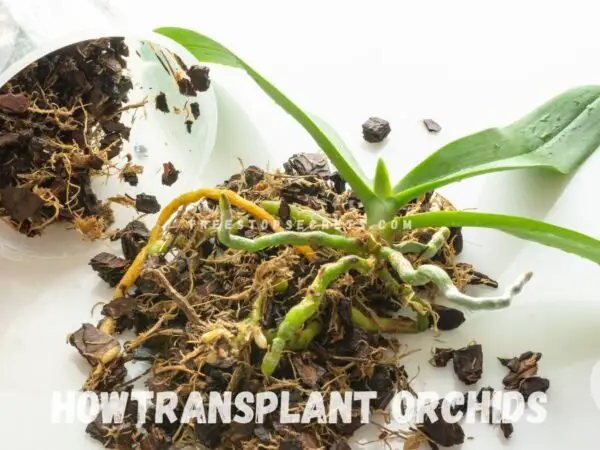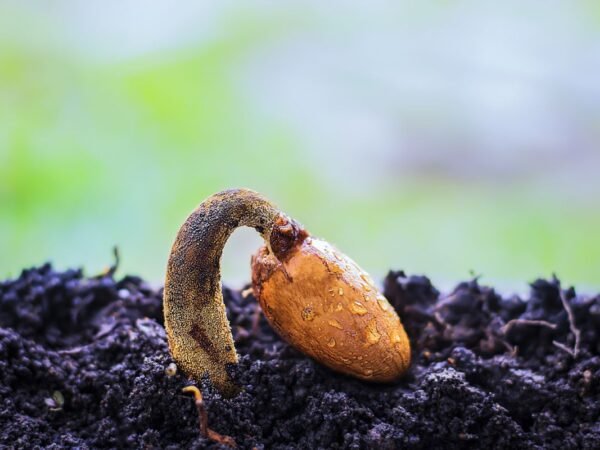So, your phalaenopsis orchid has just finished blooming and you're wondering how to encourage rebloom? Perhaps you're considering repotting or stimulating a new flower spike for its care? It's a common misconception that phalaenopsis orchids, post-bloom, require less attention for them to rebloom or produce a new flower spike after dormancy. In reality, this is the phase when your new flower spike needs you the most for optimal bloom orchid care! Keep this tip in mind and don't forget to capture the progress with a photo. Proper aftercare can greatly influence the next blooming cycle. This blog aims to debunk myths about post-bloom orchid care, particularly in the form of spikes and nodes, and provide an overview of key options and techniques to ensure your beautiful flower thrives for seasons to come. Get ready to become an expert in nurturing your orchid and its flower spike, even after its showy blossoms have faded.
Essential Post-Bloom Orchid Techniques
Orchids are not your regular houseplants. They need special care, especially after blooming.
Watering Orchids the Right Way
Watering orchids is a balancing act. Too much water can drown your orchid plant, too little can dehydrate the flower. Proper bloom orchid care includes monitoring the spike. After their flower spike blooming phase, orchids enter a resting period where they require less water than usual.
- Do not water your orchid plant until the top inch of the potting mix around the spike is dry.
- Use lukewarm water to avoid shocking the plant.
- Avoid watering your orchid plant in the evening as it encourages fungal growth.
Remember, overwatering is a common mistake that can kill your orchid faster than underwatering.
Keeping Temperature in Check
Temperature control plays a vital role in post-blooming care for orchids. Most varieties prefer cooler temperatures during their rest period.
- Maintain an average daytime temperature between 75°F and 85°F.
- Nighttime temperatures should be about 15° lower.
- Avoid sudden temperature changes to prevent stress on your plant.
A stable environment helps your orchid regain energy for its next bloom cycle.
Light Exposure Matters
Light exposure is crucial for photosynthesis and overall health of your orchid post-bloom.
- Provide bright but indirect light; direct sunlight can burn leaves.
- Rotate your plant every few days for even light distribution.
- Yellow leaves often indicate too much light while dark green leaves signal insufficient light.
Adjust accordingly to keep your orchid happy and healthy!
Regular Monitoring and Adjustments
Regular monitoring allows you to catch any issues early before they become major problems.
- Check for pests or disease regularly; early detection makes treatment easier.
- Observe leaf color and root growth as indicators of overall health.
- Adjust watering, temperature, or lighting conditions as needed based on observations.
Your attention to detail will pay off when you see new blooms forming!
Feeding Orchids: Post-Flowering Necessity
After your orchid blooms, it’s time for a bit of TLC. This involves knowing what nutrients it needs and how often to feed it.
Key Nutrients Orchids Require After Blooming
Once the flower spike fades, your orchid enters a recovery phase. It needs specific nutrients to regain strength and prepare for the next blooming cycle.
- Nitrogen (N): Promotes green growth, essential for photosynthesis.
- Phosphorus (P): Helps in energy transfer, crucial for root development.
- Potassium (K): Enhances overall plant health and resistance to diseases.
In addition to these "big three," trace elements like calcium, magnesium, and iron are also necessary.
Timing and Frequency of Feeding Post-Blooming Orchids
Feeding isn't just about what you give your orchid but also when and how often. Once the flowers drop off, reduce feeding frequency to once every two weeks. This gives the orchid time to rest while still providing needed nutrients.
Remember that less is more during this period. Overfeeding can lead to salt build-up which damages roots.
Risks Associated with Overfeeding or Underfeeding
Both overfeeding and underfeeding pose risks to your post-bloom orchid's health.
Overdoing the fertilizer can cause chemical burns on roots or leaves. On the other hand, underfeeding deprives the plant of essential nutrients slowing its recovery process after blooming.
Balance is key here; you want Goldilocks' porridge – not too hot, not too cold!
Selection Criteria for Suitable Fertilizers
Choosing an appropriate fertilizer is another critical aspect of post-bloom care. Here are some factors to consider:
- Nutrient Composition: Look for a balanced N-P-K ratio with additional trace elements.
- Type of Fertilizer: Liquid fertilizers are easy to apply and quickly absorbed.
- Brand Reputation: Opt for brands known for their quality and consistency.
Remember, the best fertilizer is one that complements your orchid's needs and your care routine.
Orchid Stem Management Post-Blooming
Ever wondered how to take care of your orchid plant after it's done blooming? It's all about managing the stem right.
Knowing When to Prune
Pruning is a crucial part of orchid care post-bloom. But timing is everything. Once your orchid's flowers drop off, you might be tempted to get snip-happy straight away. Hold up! You need to wait until the spike turns brown or yellow before you start pruning.
- If it remains green, there's a good chance a new flower spike might pop up from one of the nodes.
- On the other hand, if it starts turning brown or yellow, that’s your cue. Grab those pruning shears!
Spotting Healthy vs Unhealthy Stems
Now that you know when to prune, let's talk about what you should be looking out for. A healthy stem on an orchid plant usually has a vibrant green color and feels firm.
- If your stem is wilting or turning yellowish-brown, that ain't good news.
- Mushy stems are also a big no-no; they're often signs of rot.
Remember, unhealthy stems can affect future blooms so don't ignore them!
Future Blooms Depend on Good Stem Care
Believe it or not, how you handle your orchid stem post-blooming can impact future flowers. Proper stem management encourages new growth and ensures more stunning blooms in the next cycle.
- Cutting back an old spike to the base can often lead to stronger reblooms.
- Leaving a green spike could result in another bloom from the same spike.
It really comes down to personal preference and how much patience you have!
Handling Delicate Stems with Care
Orchids are delicate creatures and their stems are no exception. So when handling them, always be gentle and cautious.
- Avoid tugging or pulling at the stem, which can cause damage.
- Use sharp, clean tools for pruning to prevent disease transmission.
With proper care and a little TLC, your orchid will be ready to bloom once more in no time.
Different Approaches to Stem Cutting
Orchid care after blooming involves stem cutting. Two common techniques are cutting above a node and cutting at the base.
Node Versus Base Cutting
Cutting above a node means making your cut just above one of the "joints" on the orchid's stalk. This method aims to encourage new growth from that joint.
On the other hand, cutting at the base involves snipping off the entire stalk down near where it emerges from the leaves. This method is usually chosen when an orchid's bloom has completely faded and there are no nodes left for potential regrowth.
Pros and Cons
Both methods have their own set of advantages and disadvantages:
- Cutting Above a Node
- Pros:
- Can stimulate more blooms in some varieties.
- Leaves part of the stem intact, which can still photosynthesize.
- Cons:
- Not all orchids will re-bloom from old spikes.
- The resulting flowers may be smaller or fewer in number.
- Cutting at Base
- Pros:
- Encourages plant to focus energy on root growth and new leaf production.
- Helpful if plant seems weak or unhealthy.
- Cons:
- It may take longer for new blooms to appear.
- Some orchids might not respond well to this drastic cut.
Factors Influencing Cutting Method
Your choice between these two options isn't random—it depends on several factors. The health of your plant is key; if it's not doing so hot, you might want to opt for a base cut so it can focus on getting healthier. Different types of orchids respond differently—some species are more likely than others to produce new blooms from nodes on old spikes.
Tools for Stem Cutting
When it comes time to make that cut, you'll need some tools:
- A sharp, clean pair of pruning shears or a razor blade.
- Rubbing alcohol or flame for sterilizing your cutting tool.
- Cinnamon (yes, the spice!)—it's a natural fungicide and can be applied to the cut tip to prevent infection.
Remember, it's crucial to sterilize your tools before each cut to prevent disease spread. And after making your cut, apply cinnamon to the wound—it'll act like a bandage for your orchid!
Tips for Orchid Re-blooming
Orchids are a bit like divas. They demand attention and care, but when they finally bloom, it's showtime! However, getting them to re-bloom can be tricky. Here are some tips to help you out.
Optimal Conditions for Re-Blooming
Think of your orchid as a plant with a personality. It thrives in certain conditions and wilts in others. The key is to identify these optimal conditions that trigger re-blooming.
- Light: Orchids need bright but indirect light. A north or east-facing window is ideal.
- Temperature: They prefer daytime temperatures between 70-85°F and nighttime temperatures between 55-65°F.
- Humidity: Orchids love humidity! Aim for about 50%–70%.
Seasonal Changes Impact on Re-Blooms
Just like us humans, orchids also respond to seasonal changes. These changes play a role in promoting re-blooms.
For instance, the drop in temperature during fall signals the orchid that it's time to start preparing for blooming. So don't be afraid to let your orchid experience these natural fluctuations.
Common Mistakes Hindering Successful Re-Blooms
Sometimes we unknowingly make mistakes that hinder successful re-blooms. For example:
- Incorrect light levels: Too much direct sunlight can burn the leaves while too little light can lead to weak growth.
- Temperature fluctuations: Dramatic changes in temperature can stress the orchid.
By avoiding these pitfalls, you increase your chances of seeing those beautiful blooms again!
Patience During Waiting Period
Waiting for an orchid to re-bloom requires patience – loads of it! Unlike other plants that might flower multiple times a year, most orchids typically bloom once per year.
Remember, good things come to those who wait!
Nurturing Indoor Orchids Beyond Blooming
Indoor and outdoor orchid care have their unique challenges. Let's delve into how to take care of orchids after blooming indoors, maintaining humidity levels, overcoming challenges such as inadequate light or air circulation, and mimicking natural conditions for optimal growth indoors.
Indoor vs Outdoor Orchid Care
Indoor orchids are a different ball game from their outdoor counterparts. While outdoors, Mother Nature takes care of most things; indoors, you're the boss.
For instance, indoor phalaenopsis (or "Moth") orchids need a little more TLC. They love temperatures between 60-75 degrees Fahrenheit and high humidity levels—conditions hard to replicate in many homes.
Maintaining Humidity for Indoor Orchids
Humidity is key for these houseplants. Dry air can lead to shriveled leaves and poor blooms.
To maintain ideal humidity levels:
- Place your plant on a tray filled with pebbles and water.
- Mist your plant regularly.
- Use a humidifier if necessary.
Remember not to overwater though; soggy roots can spell disaster!
Overcoming Light and Air Circulation Challenges
Adequate light is crucial for your indoor orchid's survival. Too little light can prevent reblooming, while too much can burn the leaves.
Position your plants near east or north-facing windows for indirect sunlight exposure. If that's not possible, artificial lights work too!
Air circulation matters as well—it prevents disease by keeping the leaves dry and helps with nutrient absorption through the roots.
Mimicking Natural Conditions Indoors
Orchids thrive best when their natural habitat is mimicked indoors—a tricky but doable task!
Repotting every year or two helps mimic the natural decay of their organic medium in nature. Use bark chips or sphagnum moss—their porous nature allows good air circulation around the roots.
Also, remember that orchids go through a dormancy period after blooming. This is their time to rest and store energy for new flowers. So, don't fret if your orchid isn't blooming year-round!
To help them during this phase:
- Reduce watering.
- Stop fertilizing.
- Move them to a cooler spot.
Once you see new buds forming, it's time to resume normal care.
Taking care of indoor orchids after they bloom can seem daunting, but with these tips in mind, you'll be able to enjoy beautiful blooms year after year!
Mastering Post-Blooming Orchid Care
So, you've made it this far, and your orchid is still standing - that's no small feat! Orchids can be a bit fussy, but with the right care post-blooming, they can flourish. We've walked through the basics from feeding to stem cutting and even shared some insider tips on re-blooming. Now it's up to you to put these tips into practice. Remember, each orchid has its own personality - some might need a little more TLC than others.
But don't fret! With time, patience and a little experimentation, you'll become an orchid whisperer before you know it. And hey, if things go south, we're always here to lend a hand or answer any questions. So why not give it a shot? Go ahead and unleash your inner botanist!
FAQ 1: How often should I feed my orchid after blooming?
After blooming, your orchid will need less frequent feeding - typically once every two weeks is sufficient.
FAQ 2: Should I cut the stem of my orchid after blooming?
Yes, cutting the stem helps promote new growth and potentially another bloom.
FAQ 3: What kind of light do indoor orchids need post-bloom?
Indoor orchids prefer bright but indirect light. Too much direct sunlight can scorch their leaves.
FAQ 4: Can I get my orchid to re-bloom indoors?
Absolutely! With proper care including adequate light and regular feeding schedule, your indoor orchid can certainly re-bloom.
FAQ 5: Why are my orchid's leaves turning yellow after blooming?
Yellow leaves could indicate over-watering or insufficient light. Adjust as necessary based on these factors.
FAQ 6: Is there specific fertilizer for post-blooming care?
While there isn't specific post-bloom fertilizer, a balanced orchid fertilizer can be used year-round to support your orchid's overall health.
FAQ 7: How long does it take for an orchid to re-bloom?
Typically, an orchid can take anywhere from 6-9 months to re-bloom. Patience is key!
Image Source: Paid image from CANVA





